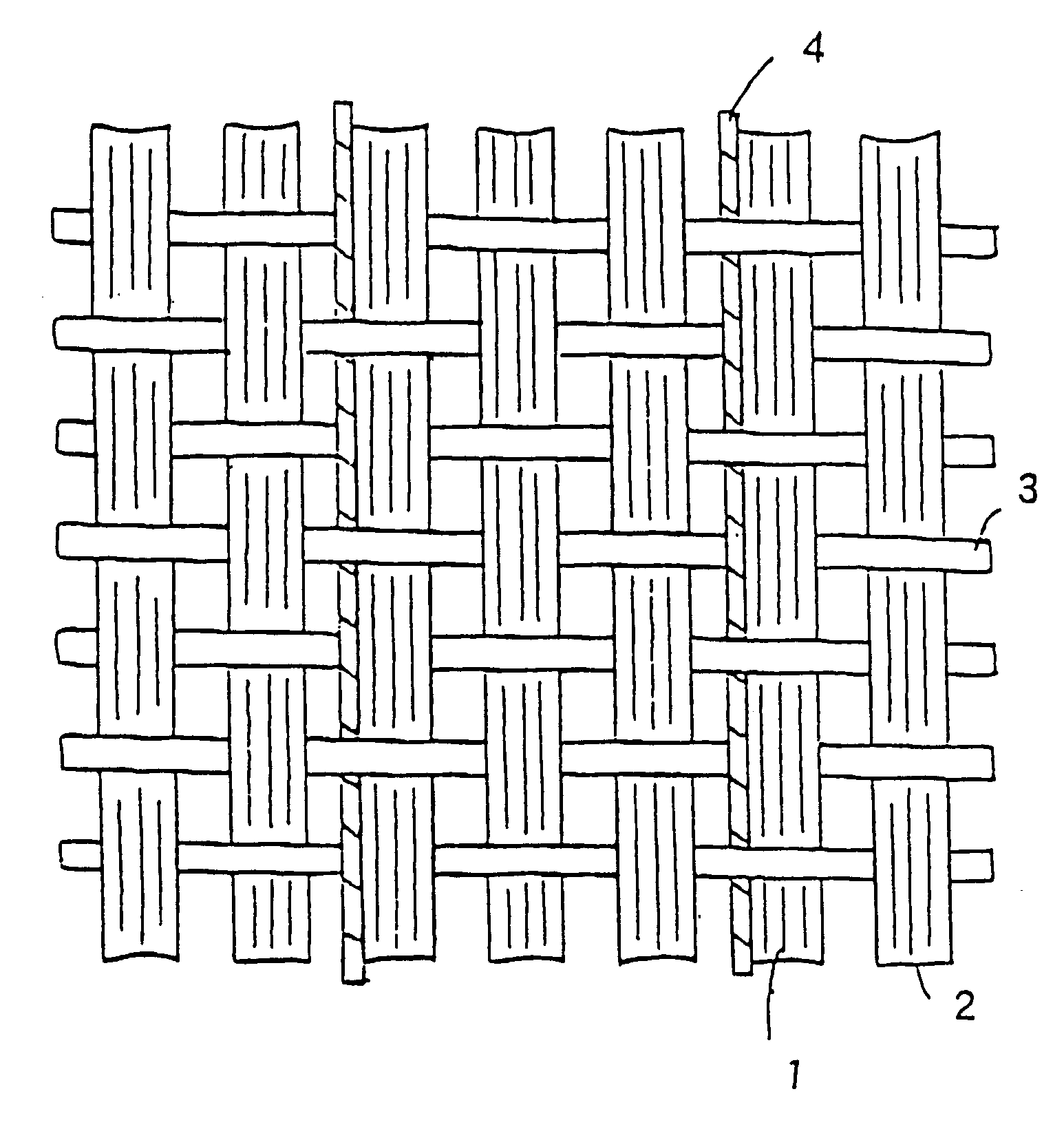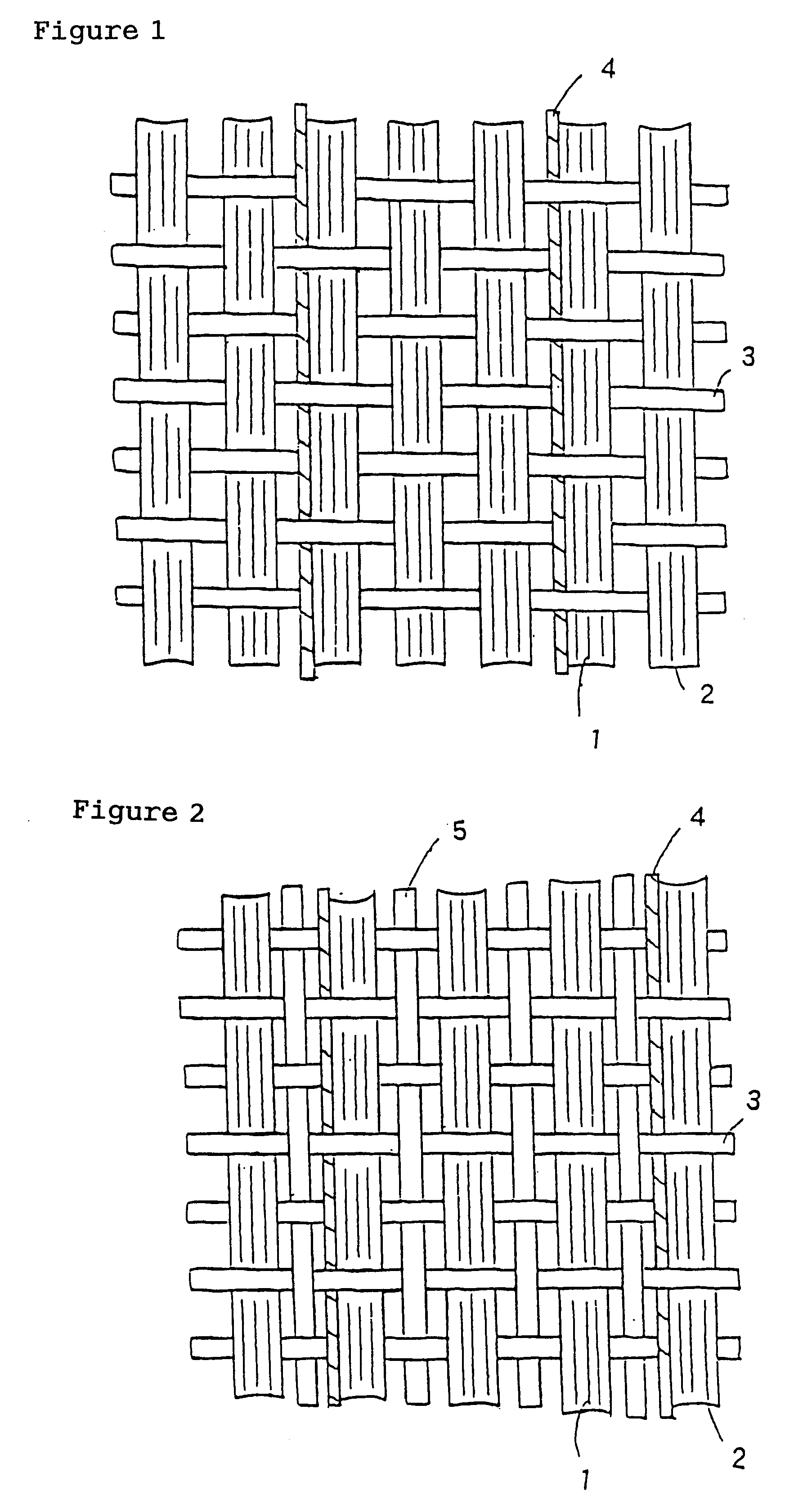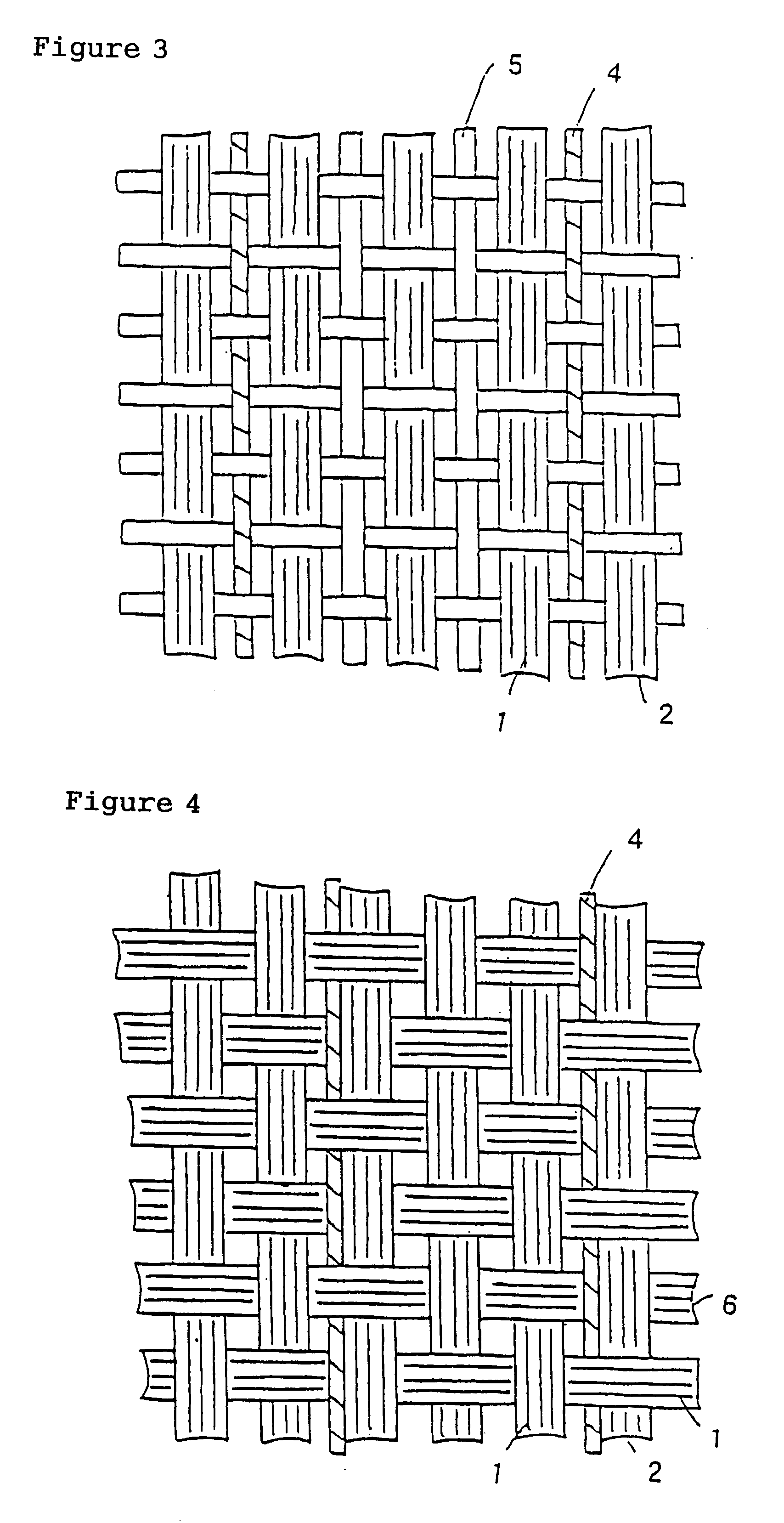Reinforcing carbon fiber material, laminate and detecting method
a technology of reinforced carbon fiber and carbon fiber material, which is applied in the direction of natural mineral layered products, water-setting substance layered products, using mechanical means, etc., can solve the problems of cracks in concrete, major accidents, and widened cracks in concr
- Summary
- Abstract
- Description
- Claims
- Application Information
AI Technical Summary
Benefits of technology
Problems solved by technology
Method used
Image
Examples
example 2
(EXAMPLE 2)
Excepting that there was employed the woven fabric shown in FIG. 5 in which the arrangement direction of the metal wire was in the weft direction, the production of a CFRP and the evaluation thereof were carried out in the same way as in Example 1. The results are shown in Table 2.
With regard to the arrangement of the metal wire in the widthwise direction here, this was carried out by insertion along with some of the glass fiber when introducing the weft glass fiber at the time of the construction of the woven fabric.
No difference in the graphs of strain against electrical resistance was noted before and after the fatigue testing, and by applying 0.2% strain the resistance was increased by 0.12 .OMEGA..
When the arrangement direction of the nichrome wire within the test piece was determined in the same way as in Example 1, since it was interwoven in the form of weft, no meandering or the like was observed.
example 3
(EXAMPLE 3)
As the metal wire, there was employed iron wire of diameter 0.11 mm, and by covering this wire by winding 75 denier, 36 filament, multifilament polyester yarn in the S direction and then 100 denier low-melting nylon yarn in the Z direction at 1000 turns per metre, there was prepared insulation-covered iron wire of covering ratio 100%.
Next, PAN-based high strength carbon fiber (number of filaments: 24,000; 14,400 denier; tensile strength 4900 MPa, tensile elastic modulus 230 GPa) was arranged at a density of 1.88 yarns per cm in the lengthwise direction, and in the widthwise direction there was introduced as auxiliary yarn, at a density of 3 yarns per cm, covered yarn produced by covering 405 denier glass fiber with 50 denier low-melting nylon yarn. At a 50 cm spacing, instead of two picks of the auxiliary yarn there was arranged the aforesaid covered iron wires two-together, so that a total of four iron wires was inserted. Next, by heating with a heater, the low-melting n...
example 4
(EXAMPLE 4)
Using an identical laminate to that in Example 4, the electric wires were heated for 1 minute using a 100 V, 1400 W electromagnetic induction device, after which this electromagnetic induction device was removed and measurement performed with an infrared radiation thermometer set at a distance of 1 m from the laminate. Now, as the infrared radiation thermometer there was used one with a HgCdTe detector, having a minimum detectable temperature difference at 30.degree. C. of 0.08.degree. C. and of measurement range -50 to 2000.degree. C.
When the temperature distribution was displayed as a colour thermal image, four regions of high temperature were observed of long thin shape running in the bridge pier lengthwise direction and it was possible to detect the fact that the number of plies was four.
PUM
| Property | Measurement | Unit |
|---|---|---|
| volume fraction | aaaaa | aaaaa |
| length | aaaaa | aaaaa |
| length | aaaaa | aaaaa |
Abstract
Description
Claims
Application Information
 Login to View More
Login to View More - R&D
- Intellectual Property
- Life Sciences
- Materials
- Tech Scout
- Unparalleled Data Quality
- Higher Quality Content
- 60% Fewer Hallucinations
Browse by: Latest US Patents, China's latest patents, Technical Efficacy Thesaurus, Application Domain, Technology Topic, Popular Technical Reports.
© 2025 PatSnap. All rights reserved.Legal|Privacy policy|Modern Slavery Act Transparency Statement|Sitemap|About US| Contact US: help@patsnap.com



